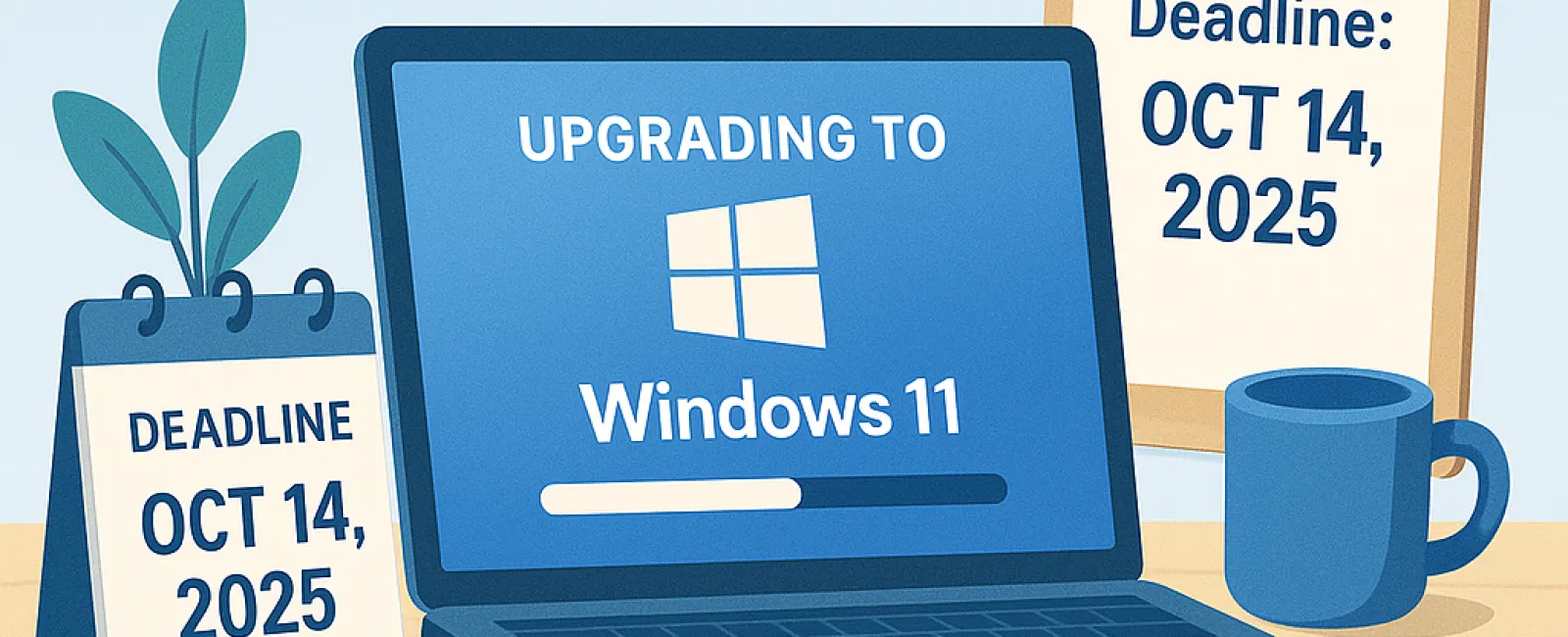June 23, 2025
If your business is still operating on Windows 10, it's time to act — the countdown has begun.
Starting October 14, 2025, Microsoft will officially stop supporting Windows 10. That means no more security updates, bug fixes, or technical assistance.
But here’s the crucial insight for business owners: delaying the upgrade isn’t just about a future task.
It’s about the hidden costs you’re incurring right now.
"We’ll Handle It Later" Could Cost You Big
We understand—upgrading every device isn’t a budget highlight. It’s tempting to postpone until a problem forces your hand.
But procrastination actually leads to these costly consequences:
1. Operating Without Protection
After support ends, your business is fully exposed to new security threats.
Hackers target outdated systems because they’re vulnerable—it’s like locking the door but leaving the windows wide open.
A single security breach could cost thousands or even jeopardize your entire operation.
2. Compatibility Problems With Software & Hardware
Many essential business applications—like accounting software, CRMs, and industry tools—are phasing out Windows 10 support.
If your systems fail mid-project or crash during client presentations, the cost to your reputation and revenue can be significant.
It’s not just software—new printers, peripherals, and security devices may also stop working properly.
3. Reduced Productivity and Efficiency
Older systems run slower, crash more often, and frustrate your team. Even minor delays add up, lowering productivity, morale, and your competitive edge.
If employees lose just 10 to 15 minutes daily to tech issues, imagine the impact over weeks and months.
4. Emergency Upgrades Cost More
Waiting for a system failure triggers a costly scramble, including emergency hardware purchases, expedited IT services, and business downtime.
• Emergency hardware orders
• Rush IT labor fees
• Interruptions during critical operations
Planning ahead saves money, stress, and operational chaos.
5. Compliance Risks and Potential Fines
If your business handles sensitive information or must comply with regulations (HIPAA, PCI-DSS, etc.), using unsupported software could lead to costly fines or legal action. Updated security is mandatory, and Windows 10 won’t meet these standards after October.
How Forward-Thinking Businesses Are Preparing Today
Smart companies aren’t just upgrading devices—they’re using this opportunity to:
• Audit and retire outdated devices
• Streamline software and tools
• Strengthen cybersecurity defenses
• Plan IT budgets strategically for 2025
Steps to Ensure a Seamless Transition
We recommend the following approach:
• Conduct a compatibility assessment - Identify which devices support Windows 11 and which require replacement.
• Review your applications - Confirm critical software is compatible with Windows 11 or newer platforms.
• Budget for new hardware early - Avoid supply chain delays by planning ahead.
• Partner with a trusted IT provider - Let experts manage your upgrade smoothly with zero downtime and no surprises.
Don’t Delay Until October—Act Now
Procrastinating will only increase costs, stress, and lost opportunities. We specialize in helping small businesses upgrade smartly: with careful planning, seamless execution, and a focus on future growth.
Click here or call us at (619) 349-5850 to schedule your FREE 15-Minute Discovery Call. We’ll help you determine what to upgrade, what to keep, and create a transition plan that keeps your business running smoothly before the deadline.





